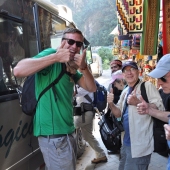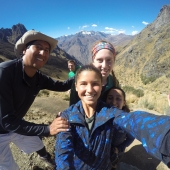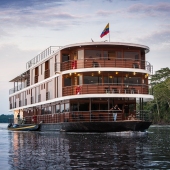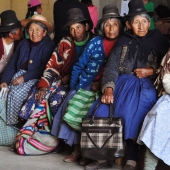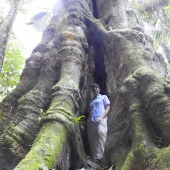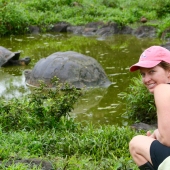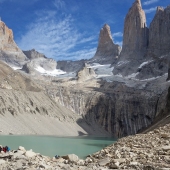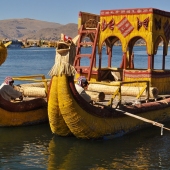Off to Northern Peru (part 4)
(continue from "Our Guide, Our Mother and Our Chicha Beer" part 3)
Before leaving the hotel for the Cusco airport, Vidal told me privately that my son did not have altitude sickness. Vidal was confident that my son had some kind of bug. It was not the kind of quick, laid-out-on-your-bed kind of sickness. It was a slow-brewing fever that caused a general sense of malaise.
As a gesture of his generosity, Vidal went home after dinner and dug up Incan potshards from his yard. They are apparently found everywhere. People building homes find the ancient chunks of clay an annoyance and throw them out. Vidal knew my passion for archaeology and ancient relics and he wanted to give me a special gift.
At the Cusco airport, he plunked a ziploc baggie full of what appeared to be ancient artifacts of clay pot shards into my hands. I cried. Okay, it was more like a blubber. Our group said good by to Vidal and flew to Lima to board another flight to Cajamarca, in northern Peru, for the second half of our trip. We were all a little tired and our momentum had crashed. We missed Vidal and I wished he were with us.
At this time, I didn't realize that fewer than 1% of tourists venture into the northern regions of Peru. I was about to find out why. All day, I watched my son as we maneuvered through airports and on and off planes. The knot in my stomach was solid. (Anyone who's been a parent will know what knot I'm talking about.)
We arrived in Cajamarca, a very old town with a history that was famous. Atahualpa, the Incan king, was held captive here by the Spanish conquistadors and managed to run the Incan kingdom while imprisoned. (You'll have to read the book to get the full story. It's long. "The Conquest of the Incas" by John Hemming.) The town was tired and dusty, not as vibrant as Cusco. It was even a little depressing. I wished we had visited here first, then gone to Cusco for the second half of our trip.
My spirits were lifted when we were greeted by the most enthusiastic guides, directors and crew I have ever met. It was as if we arrived on the Andean Mountain version of Gilligan's Island. Each person was a character in their own right and they were truly happy we were there. When I told the director about my son and his malaise, the first words out of his mouth were, "he probably has altitude sickness." And so began the twisting of the knot in my gut. It was a guessing game of what he could have eaten, what he did, where he went, etc, etc.
Let's pause here for a travel tip. One that I had to learn the hard way. Always, always travel with your own thermometer. Get the kind your mom used when you were growing up. The kind you are familiar with. Especially if you're American and you have been educated, no, ingrained, with the Fahrenheit measurement system. Learning how to convert Celcius to Fahrenheit while under stress is not the most desirable conditions for learning.
But first, I had to find a thermometer. Two wonderful, English nurses arrived at our hotel to check on my son. They were compassionate, smart and they knew nothing about altitude sickness, except what they learned from the textbook. They had just arrived in South America a few days earlier. (just my luck!) (continue to "Traveling Where the Paved Road Ends" part 5)


